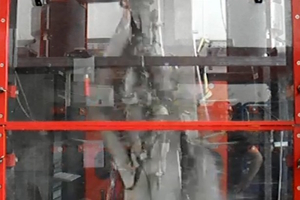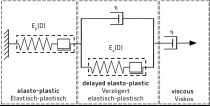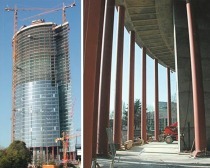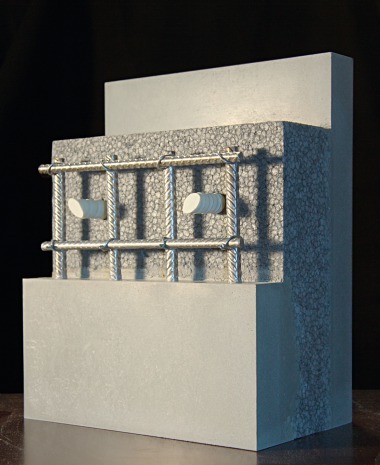Enhanced design rules on compression members using high-strength and ultra-high performance concretes
The robust design of supporting structures is the basis for every structural design. Damages caused by unplanned loads must be limited to a reasonable extent in order to prevent abrupt failure or progressive collapse. While abrupt tensile failure occurring at structural members subjected to bending loads is prevented by complying with the minimum reinforcement for ensuring a ductile behavior of the component, a robust component failure occurring at structural members subjected to compression loads cannot be guaranteed by the current structural design requirements in all cases (Fig.). In particular, when using high-strength concretes and ultra-high performance concretes, adapting or enhancing the structural design rules on compression members need to be discussed.
Technical literature contains various approaches to evaluate the load-bearing behavior and the post-cracking behavior of reinforced concrete columns, however, only a few of them allow an assessment of the robustness. Therefore, at iBMB, Division of Concrete Construction of the TU Braunschweig, a method was developed which determines the robustness by the ratio of load capacity and load at a defined compressive strain in the post-cracking stage. Subsequently, the test data was used to develop a validated rheological model, representing the load-bearing behavior and the post-cracking behavior of reinforced concrete columns in a practical manner and thus enabling a simple assessment of the robustness. A parameter study on the impact of essential column parameters disclosed deficiencies of the existing structural design rules and identified measures for a purposeful influence on the robustness. Finally, proposals were made based on the above-mentioned investigations for adapting or enhancing the design rules on compressive members taking in particular high-strength concretes and ultra-high performance concretes into account.








